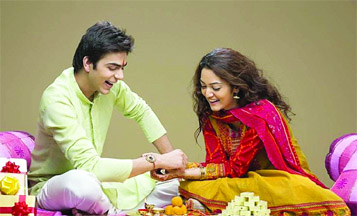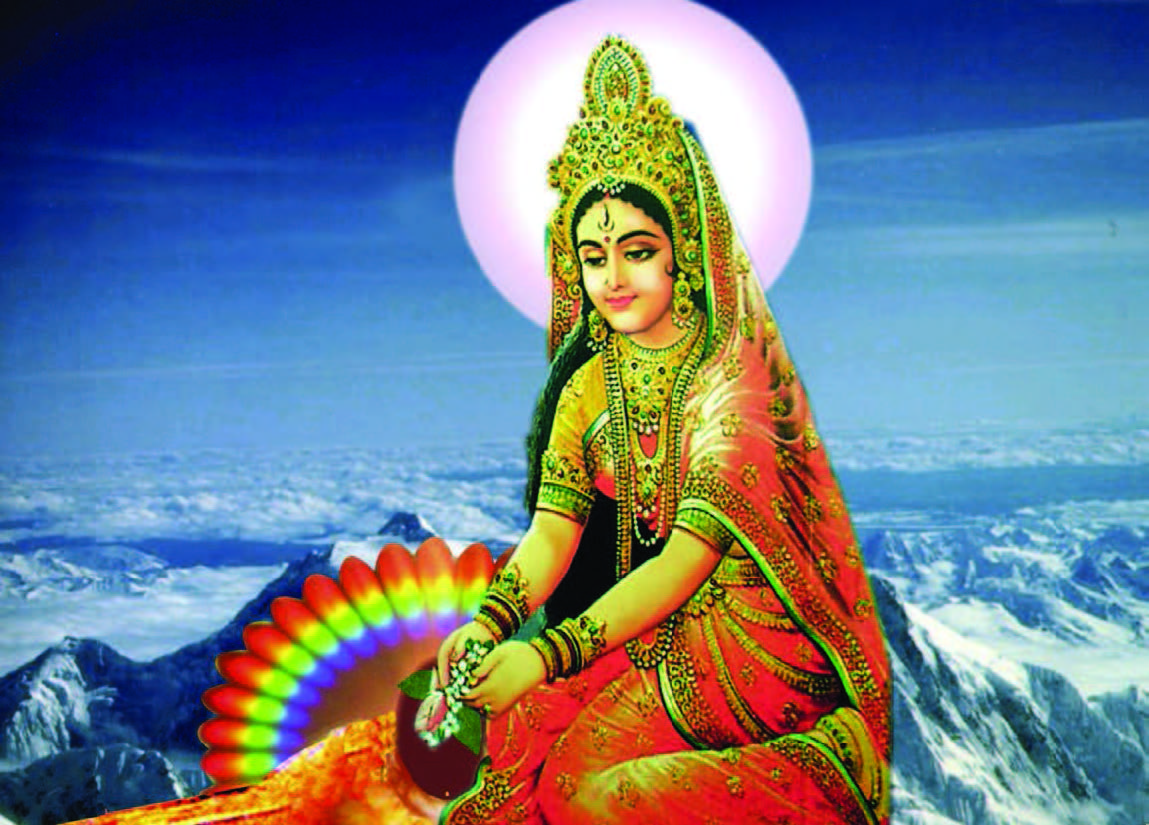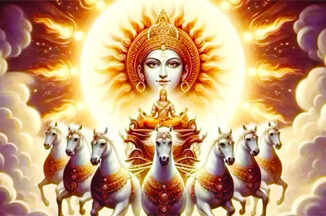
Raksha Bandhan is observed to acknowledge the sublime bond between siblings. Brothers promise to protect their sisters while sisters wish for their brothers’ immortality while tying a sacred thread ‘rakhi’ around the wrist of their brothers. The festival is celebrated on the day of the full moon in the month of Shravana, according to the Hindu calendar, which usually falls in August. According to the Hindu Panchang, on 19 August, from 03.04 am to 11.55 pm, along with the full moon date, Bhadra will start, which will last till 01.32 pm. The auspicious time for tying Rakhi on 19th August is from 01.33 pm to 11.55 pm.
Raksha Bandhan is observed on the last day of the Hindu lunar calendar month of Shravana, which typically falls in August. The expression “Raksha Bandhan” (Sanskrit, literally “the bond of protection, obligation, or care”) is now principally applied to this ritual. Until the mid-20th century, the expression was more commonly applied to a similar ritual, held on the same day, with precedence in ancient Hindu texts. In that ritual, a domestic priest ties amulets, charms, or threads on the wrists of his patrons, or changes their sacred thread, and receives gifts of money. This is still the case in some places. By contrast, the sister-brother festival, with origins in folk culture, had names which varied with location. Some were rendered as saluno, silono, and rakri. A ritual associated with saluno included the sisters placing shoots of barley behind the ears of their brothers.
Of special significance to married women, Raksha Bandhan is rooted in the practice of territorial or village exogamy. The bride marries out of her natal village or town, and her parents by custom do not visit her in her married home. In rural north India, where village exogamy is strongly prevalent, large numbers of married Hindu women travel back to their parents’ homes every year for the ceremony. Their brothers, who typically live with their parents or nearby, sometimes travel to their sisters’ married home to escort them back. Many younger married women arrive a few weeks earlier at their natal homes and stay until the ceremony. The brothers serve as lifelong intermediaries between their sisters’ married and parental homes, as well as potential stewards of their security. Let’s take a look at some of the interesting stories around Raksha Bandhan in Indian mythology.
Krishna and Draupadi
Amongst the better-known legends around the origin of Raksha Bandhan is the story of Krishna and Draupadi. According to one version of the Mahabharata, Krishna slit his index finger in battle, while hurling his divine weapon, the Sudarshan Chakra, at his nephew, Shishupala. Another version says he cut his finger while reaping sugarcane from the fields. Both stories conclude with Draupadi tearing a piece of her saree and wrapping it around his finger to stop the bleeding. Pleased by this loving gesture from Draupadi, Krishna took a divine oath to protect Draupadi’s honour in the future. This is also believed to be the reason why he came to her rescue during the infamous disrobing by the Kauravas.
King Bali and Goddess Lakshmi
Another legend about the festival revolves around the story of Goddess Lakshmi and King Bali. When Bali selflessly gave everything that Vishnu had asked for disguised as Vamana, Vishnu became very impressed by Bali’s devotion. He blessed Bali to be equal in status to Indra for as long as he lived. He also promised to protect Bali and his homestead and disguised himself as a gatekeeper guarding Bali’s palace. However, Vishnu’s wife, goddess Lakshmi, missed her husband in Vaikunth. Unable to bear her husband’s absence, she disguised herself as a poor Brahmin lady and went to Bali, and told him that she wanted a place to stay until her husband returned from the task he had set out to accomplish. Bali wholeheartedly welcomed her and protected her just like an elder brother.
With the arrival of the goddess, Bali’s palace was filled with happiness and wealth. On the day of Shravana Purnima, the poor Brahmin lady tied a coloured cotton thread around his wrist. Overwhelmed by the gesture, Bali granted her a wish. The Brahmin lady pointed at the gatekeeper and asked for her husband to be set free. In an instant, Vishnu and Lakshmi then returned to their true form. King Bali was touched by the love and care they had shown him and requested Vishnu to go back to his abode with Lakshmi. However, he requested Vishnu to visit him at least once every year. It is believed that lord Vishnu visits King Bali for four months every monsoon.
The legend in the Bhavishya Puran
The legend refers to a war between the Gods and the Demons. The demon King Brutra was advancing and the Gods lead by lord Indra, were on verge of defeat. The king of Gods, Indra approached Guru Brihaspati to find a solution to the situation. Brihaspati asked Indra to tie a sacred thread on his wrist, powered by the sacred mantras on the Shravan Purnima. Lord Indra’s Queen Sachi also called Indrani, empowered the thread and tied it on to his hand on the decided day. The power of the sacred thread called Raksha helped the Gods to victory. The tradition of thread tying still continues. It is a gesture of goodwill.
Yama and the Yamuna
It is said that the Raksha Bandhan was a ritual followed by Lord Yama (the Lord of Death) and his sister Yamuna. Yamuna tied rakhi to Yama and bestowed immortality. Yama was so moved by the serenity of the occasion that he declared thar whoever gets a rakhi tied from his sister and promised her protection will become immortal.
In the Epics
Raksha Bandhan finds a mention in Mahabharata when Lord Krishna advised Yudhishthir to perform the ceremony to protect himself and the army from the dangers of the war. It is said that Kunti, the mother of the Pandavas tied rakhi to her grandson Abhimanyu and Draupadi to lord Krishna.





Be the first to comment